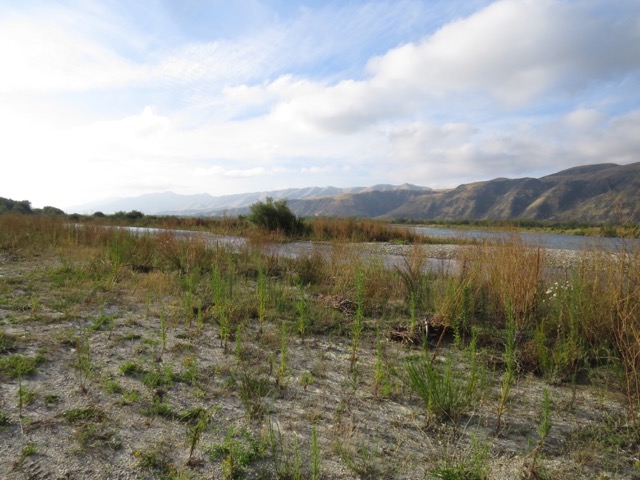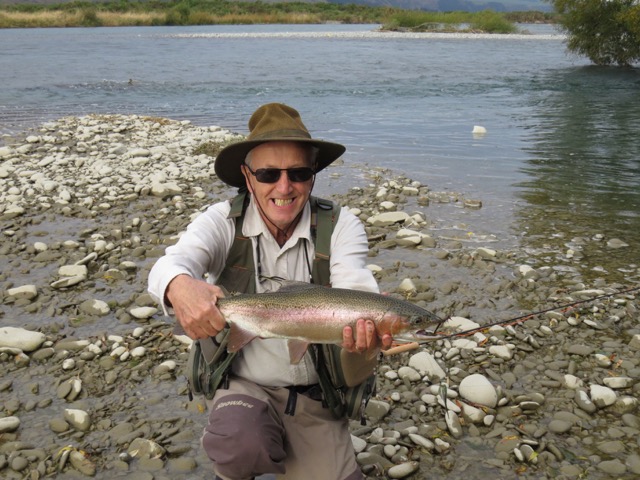Within an hour of arriving in Christchurch, after a brief stop for breakfast in Australia, we had the keys to our new home for our eight weeks in New Zealand. Immediately we gave him a name, knowing from our sailing days that anything without a name will break.
Charlie Crafter, our VW camper van, took us to the nearest campground, where after a brief excursion to the supermarket, we collapsed; partly in shock at the cost of things in the supermarket, mostly from exhaustion.
First thing next morning Charlie was back at the depot while the Apollo people sorted out a couple of issues. Knowing we had hired the vehicle for eight weeks, we were surprised that they had sent us out with a bald rear tyre, dying water pump and broken gas ring. They were quickly fixed and we headed out to explore Christchurch.
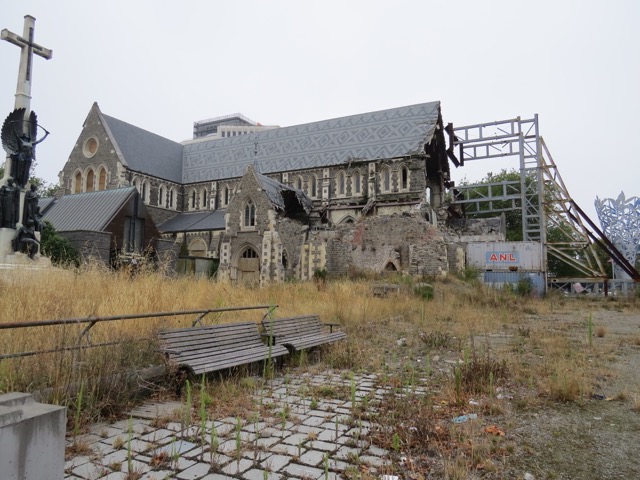
The
ruins of the old Christchurch Cathedral.
The city was devastated by a series of earthquakes in 2010 and 2011 and rebuilding was evident everywhere.
Parking close to the beautiful Botanic Gardens, we took a walking tour of the city, passing the “Re:START” shopping centre, which had been reconstructed temporarily from shipping containers, to keep businesses alive.
We visited 'Quake City', a museum where we learned about the shocking events of the earthquakes, the resulting devastation, loss of life and the subsequent reconstruction. Also on display were the plans for the city's future and even artworks created from salvaged materials.
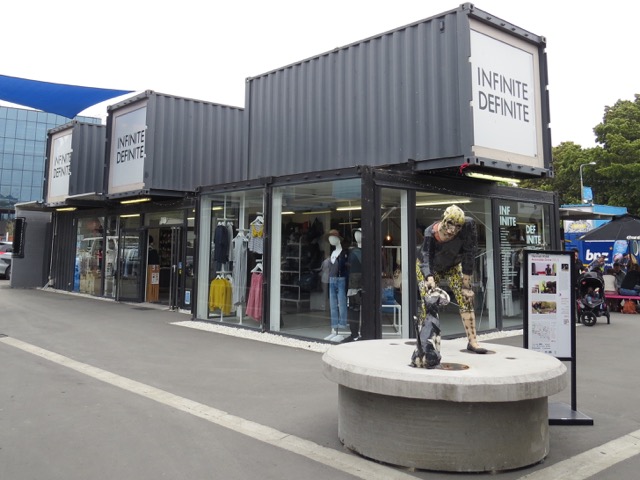
Temporary
'Re:START mall”
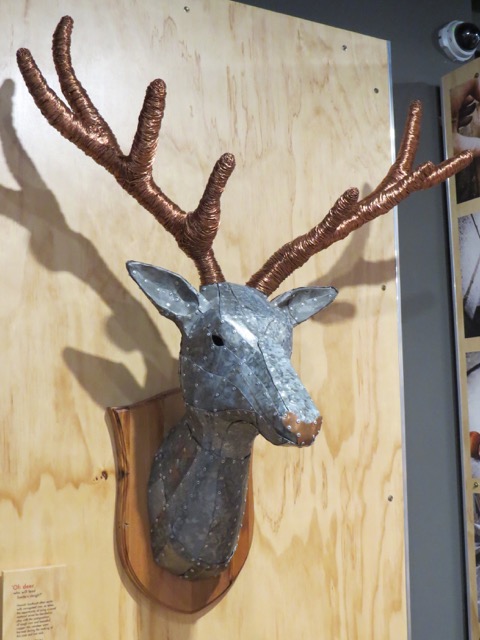
Art
from Destruction
Continuing our walking route we headed to the poignant installation named “185 chairs”. Here on a street corner 185 empty white chairs stood in memory of those killed in the disaster. Nearby was the temporary “Cardboard Cathedral” so named for its superstructure of 98 industrial strength cardboard tubes, which stood on the site of the former church. Unfortunately we couldn't take a closer look as a funeral was in progress.
We passed the damaged Cathedral, still abandoned while debate continues about whether to rebuild or demolish and start again.
At the iSite, one of the country's network of tourist information centres, we purchased the obligatory postcards and stamps. Here began several days of confusion when we noticed that the stamps on our cards didn't match the logo on the postbox. Not wanting our cards to go astray, we began asking locals if it was OK to place items stamped with one mail company's stamps in a box from another. Three days later we were convinced that the locals were as confused by the whole thing as us and our cards were still not mailed. Even businesses selling stamps didn't seem to know, and we never managed to catch a post office during opening hours. After despatching our cards in a random mailbox, we vowed not to send any more, it involved too much stress!
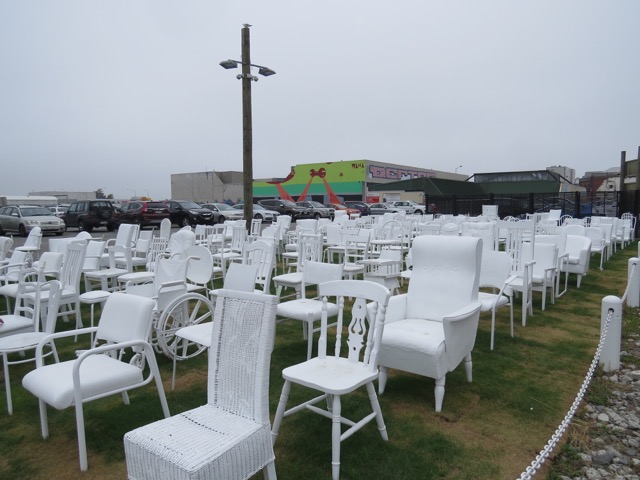
“185
empty chairs.”
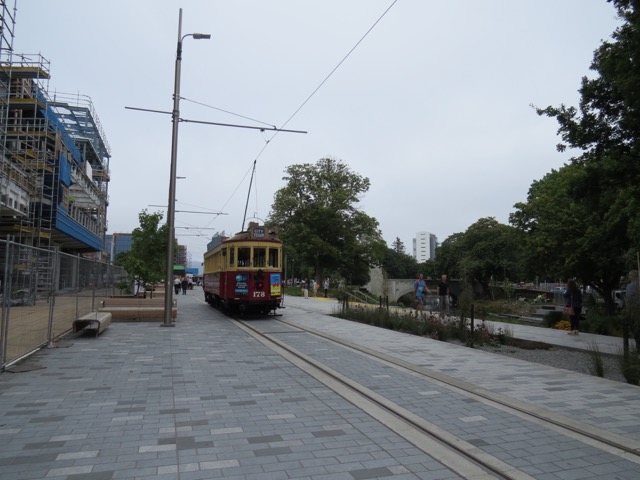
“Christchurch
tram passing a reconstruction site.”
Wanting to ensure that everything on Charlie was in fine working order before heading far from his Christchurch base, we took an overnight side trip along the winding, rural roads of the Banks Peninsula to the lovely seaside town of Akaroa. It was our first time searching for 'freedom camping'; free overnight parking for self-contained vehicles provided by the local council, and we were happy to grab a seafront spot among a crowd of tourists.
Akaroa showed the influence of the early French settlers with French street names and restaurants. We decided to walk along the seafront to the lighthouse. On the way we met Steve, a local working hard in the boatyard on a steel yacht in which he planned to sail the world. Our discussions with him were lively and enthusiastic and we enjoyed a tour of his beautiful boat, the distinctive 'boat smell' mixed with the smell of drying paint bringing back memories of Anju.
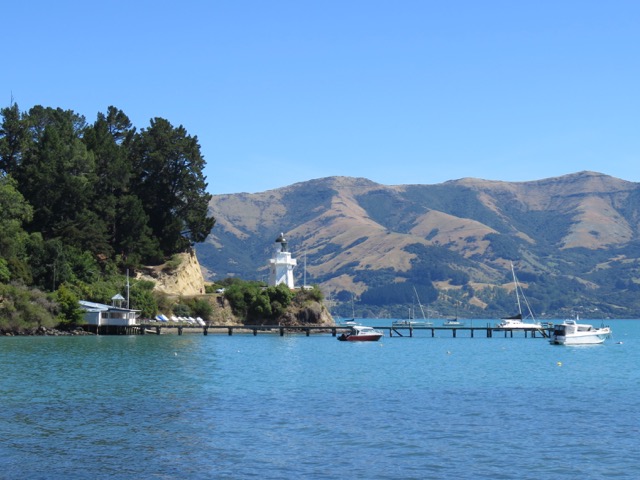
Akaroa's
lighthouse
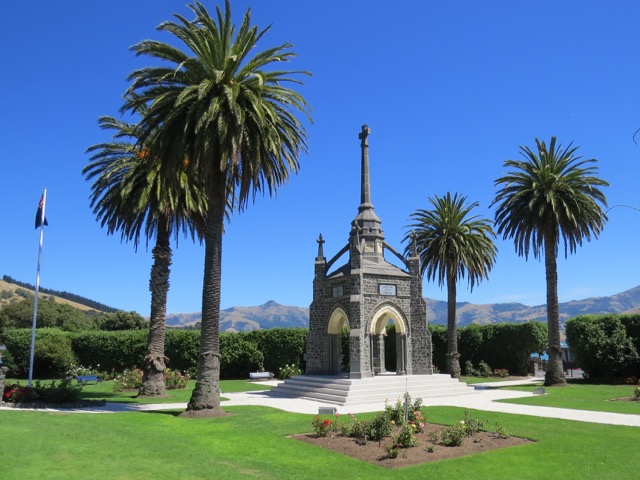
War
memorial
We drove through Christchurch again on our way south along the east coast of South Island, stopping briefly for more kitchen equipment to supplement Charlie's meagre supply and a bluetooth speaker to allow us to enjoy tunes on the road.
Our route to Timaru took us over the longest bridge in New Zealand, before heading for the Freedom camping spot at the city's park. To reach town from there involved walking through a beautiful rose garden to reach a glass lift up to the level of the town, giving 'up town' new meaning. The camping spot was conveniently located for the beach where at night it was alleged you could view penguins.
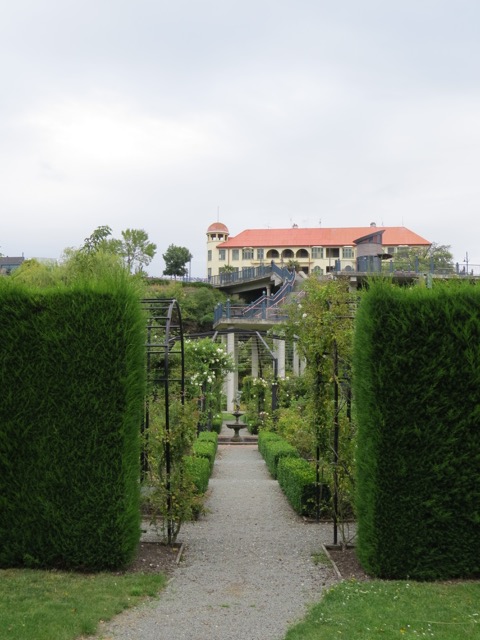
Always eager, we headed out too soon before sunset but had time to explore the waterfront before re-joining a growing crowd of expectant tourists waiting for our feathered friends to put in an appearance. It grew darker and some people began to give up hope, wandering away. It was becoming difficult to see anything in the gloom. After all, it was really the wrong time of year for penguin spotting during their moulting stage.
Our German camping neighbours heard a penguin hiding in the rocks but still none were to be seen. People began to stroll the beach hoping for a glimpse of a bird hiding in a hole in the rocks. Suddenly Phil called out to them, “There's one right behind you.” The people, assuming he was teasing, ignored him but sure enough wandering right behind the small group of tourists was a seemingly unconcerned penguin!
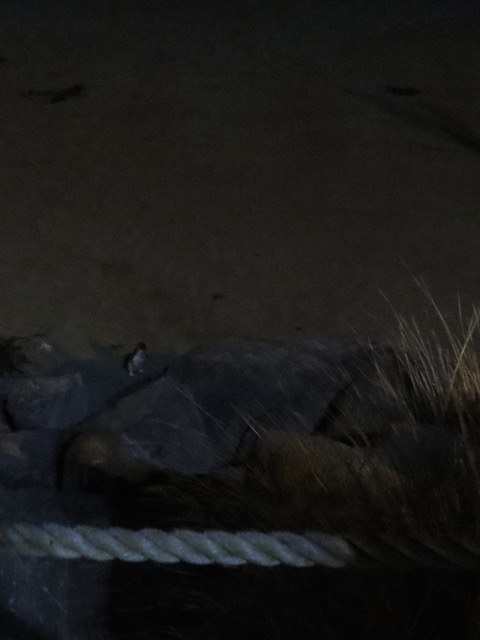
What
are all these people going here?
Next morning we were headed to Oamaru, having pre-booked a commercial campground in the city. Oamaru claims to be the Steampunk capital of the world. As we left our campground to seek out Steampunk HQ, it seemed that the town made every effort to live up to its reputation. The playground we walked through was certainly eclectic. The climbing frame was a giant elephant, the swing set an enormous penny-farthing.
We arrived at Steampunk HQ, a gallery containing the works of a local sculptor in the Victorian mechanical meets futuristic fantasy style. Outside a steam engine pointed towards the sky belching steam and fire. Inside the theme continued with an assortment of wonderful sculpture created essentially from metal junk, an interactive space portal, which was so extraordinary we had to visit twice, and an old church organ converted to sonic art production machine.
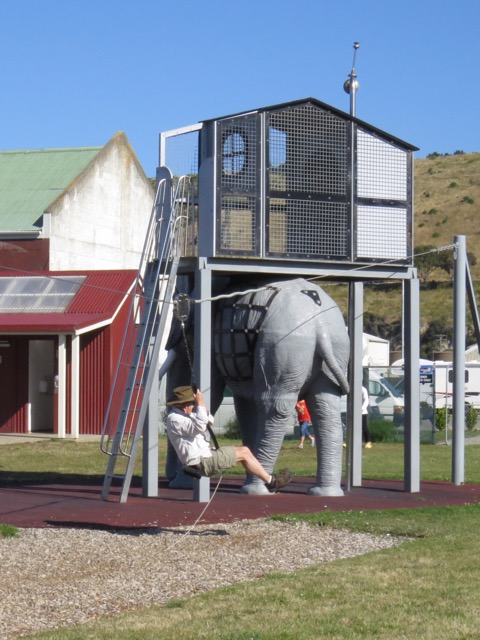
Steampunk
Zipline
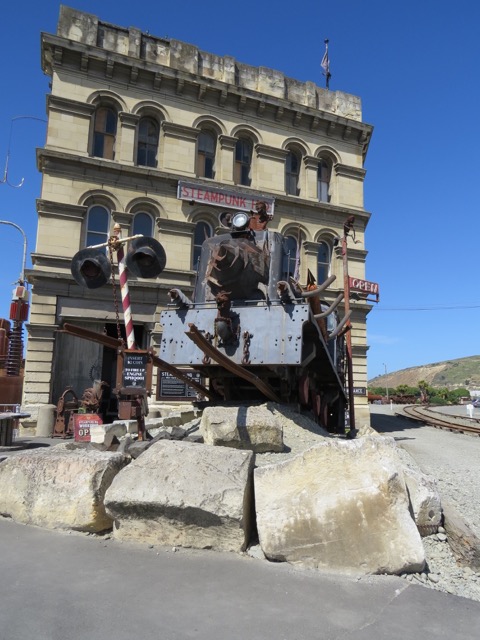
Steampunk
HQ.
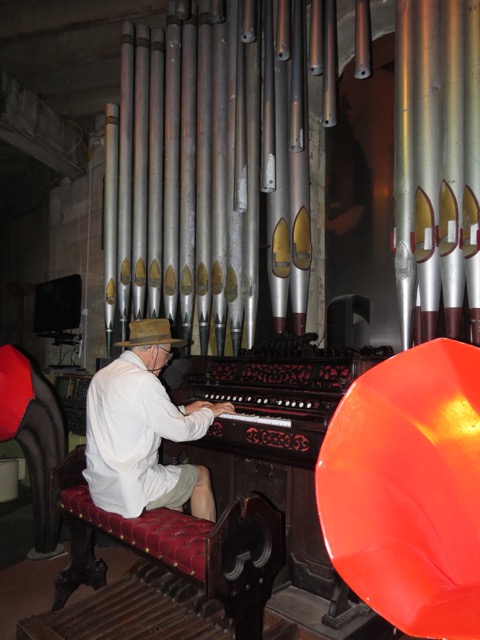
Phil
creates his own sonic sculpture.
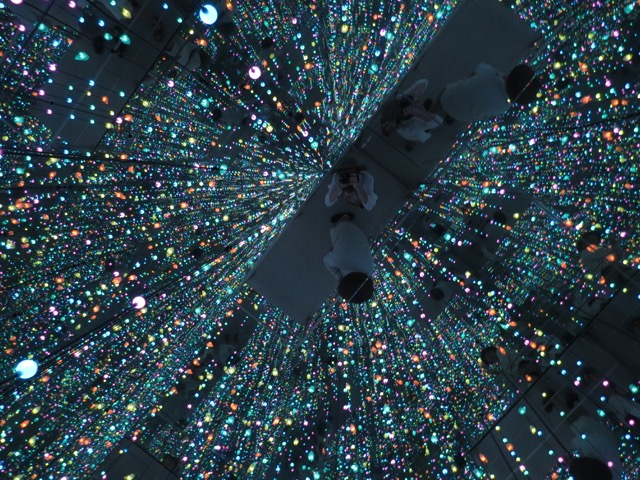
The
mind-boggling portal.
Our minds blown, we headed back to the campground, spotting signs of the area's agricultural heritage in the huge wool stores on the former docks.
Our campground had its own resident penguin, which apparently lived beneath the campers' kitchen. We didn't spot it, mostly because we spent the evening at Scotts Brewing Company sampling the local brew.
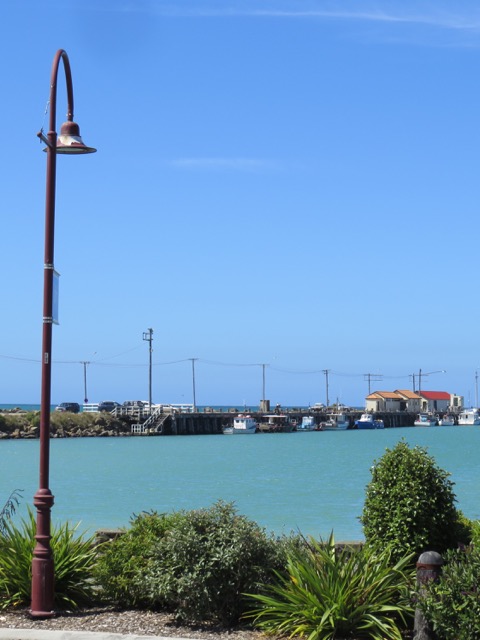
View
from the Campground.
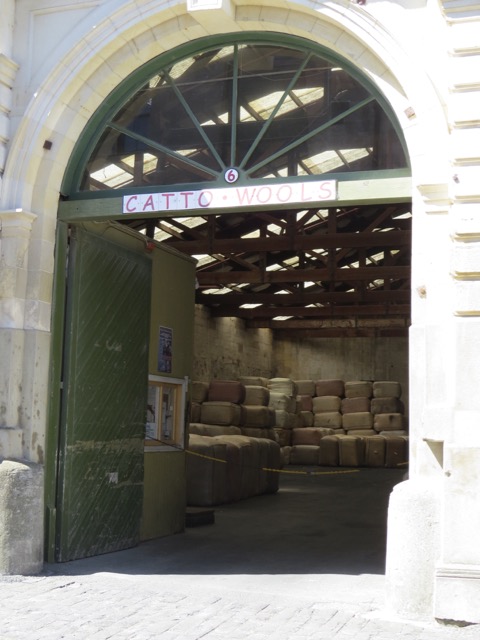
Oamaru
wool store.
The fisherman was getting antsy to cast, having picked up a fishing access guide in Timaru's Hunting and Fishing store. Before he was allowed to head inland in search of river action, we had two further tourist spots on the coast to check off.
First stop was Moeraki Boulders where our humour was not improved by an American tourist who seemed to think he was the parking police with a dislike of campervans. A short hike was required to the boulders, a mysterious cluster of perfectly round rocks with honeycomb-shaped centres. There was quite a crowd at the rocks but beautiful Shag Point a few miles further on was beautifully peaceful and we enjoyed the wildlife with Sophie our young German hitchhiker.
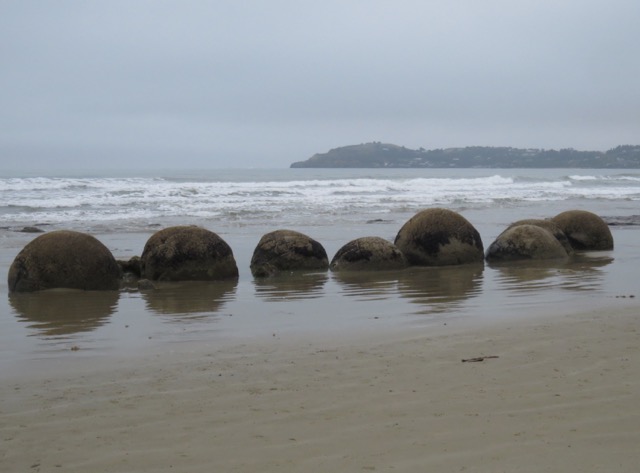
Moeraki
Boulders
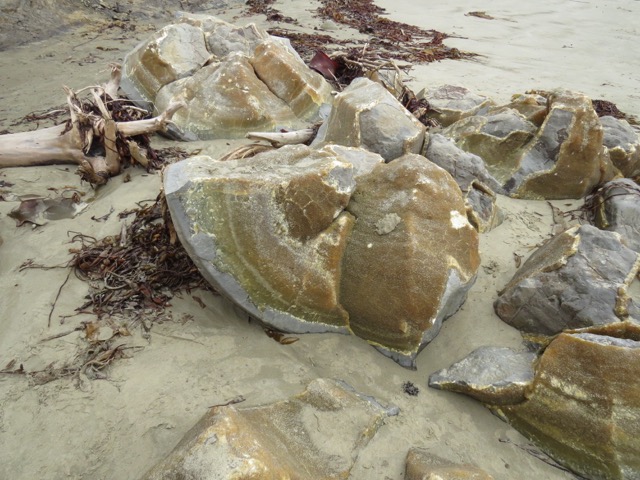
Broken
boulder
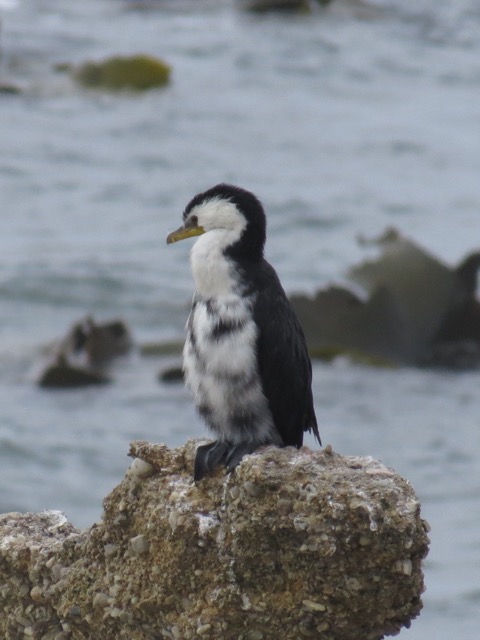
Mr
Shag of Shag Point
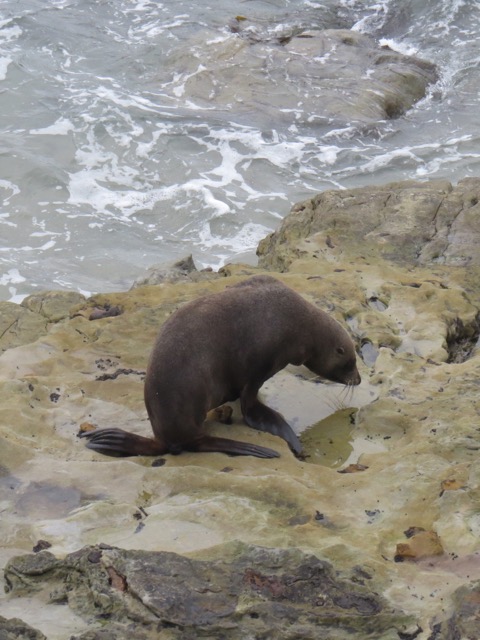
Seal
at Shag Point
OK, enough touristing. It was time to pull out the fishing access book at seek out some trout. We headed inland to Duntroon and tried our first “domain” camping. “Domain” camping was provided by the local council by opening up a park or, in this case a sports field with bathroom facilities for camping for a modest fee.
We set up camp near the Waitaki River and waded down the stream adjacent to the campground in search of the confluence with the river. “In Search of the Confluence” proved to be a theme on this holiday. Finally we arrived, having failed to locate any fish in the shallow stream. On the river Phil finally spotted a likely spot and set to work. He knew where a large fish was likely to be and wasn't wrong. A 24” rainbow trout was landed with a streamer followed soon after by a small brown trout. The first fish in New Zealand's rivers.
